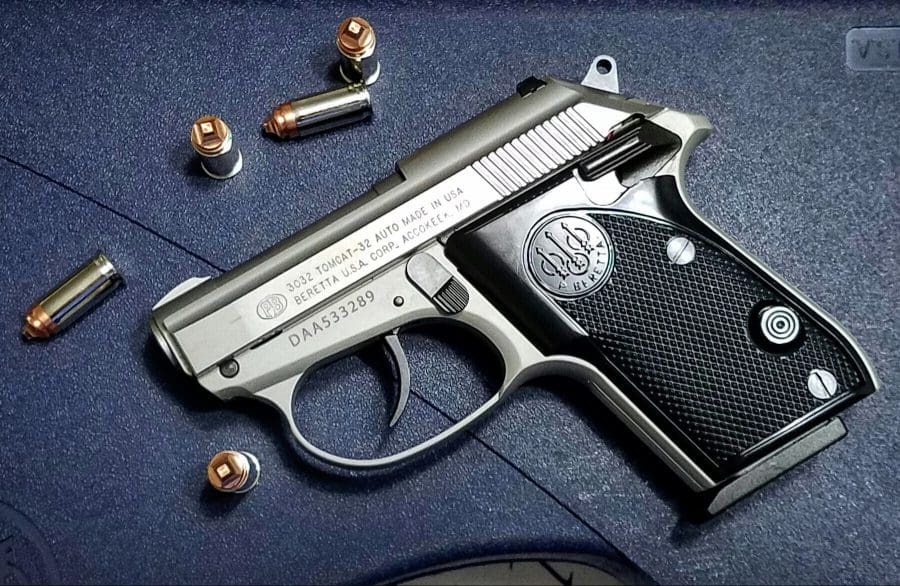I like weird guns. In fact, I pretty much like all guns. I know in the past, some people haven’t understood some of my Obscure Objects of Desire, and I get it. That said, I think we can all agree the S&W M1917 revolver was a pretty awesome gun and worthy of being an OOOD status.
While I’m a fan of nearly all guns, like many of us, I have a list of some that are more equal than others. Some call them grail guns, and I have mine. The M1917 ranks quite high on that list. So when I picked one up for $310 dollars, I walked away quite happy with myself.
What’s an M1917?
When the United States entered World War I, they didn’t have handguns. Hell, they didn’t really have enough rifles. While the M1911 and Springfield M1903 often get the credit for winning the war, the Enfield M1917 rifle and M1917 revolvers were issued in greater numbers than the M1903 and M1911 ever were. When they entered the war, the United States needed handguns, so they approached both Colt and Smith & Wesson about producing revolvers for the war effort.

Not just any revolvers, .45 ACP revolvers. This was tricky since those fat .45 ACP pills don’t have a pronounced rim. Luckily Daniel B. Wesson created the half-moon clip and quickly solved that problem. S&W allowed Colt to use the clip technology for free in an effort to get our Doughboys the guns they needed. Colt used the M1909 New Service to form their .45 ACP revolver, and Smith used the famed Triple Lock .44 Hand Ejector.
Obviously, both were converted to .45 ACP. These guns armed two-thirds of soldiers who carried handguns. They were also used in World War II and even saw combat with the Tunnel Rat types in Vietnam. They’re hardy, well-made pieces of American steel, so what’s not to love?
The M1917 Design
Predictably, this is a pretty standard turn-of-the-century revolver. The ejection rod isn’t shrouded. It’s a double-action with thin grips and a lanyard loop pokes out from the bottom of the grip. The sights are a big front blade up front and a traditional rear trench in the top strap. The guns held six rounds and they used half-moon clips originally. After the war, full-moon clips became available.
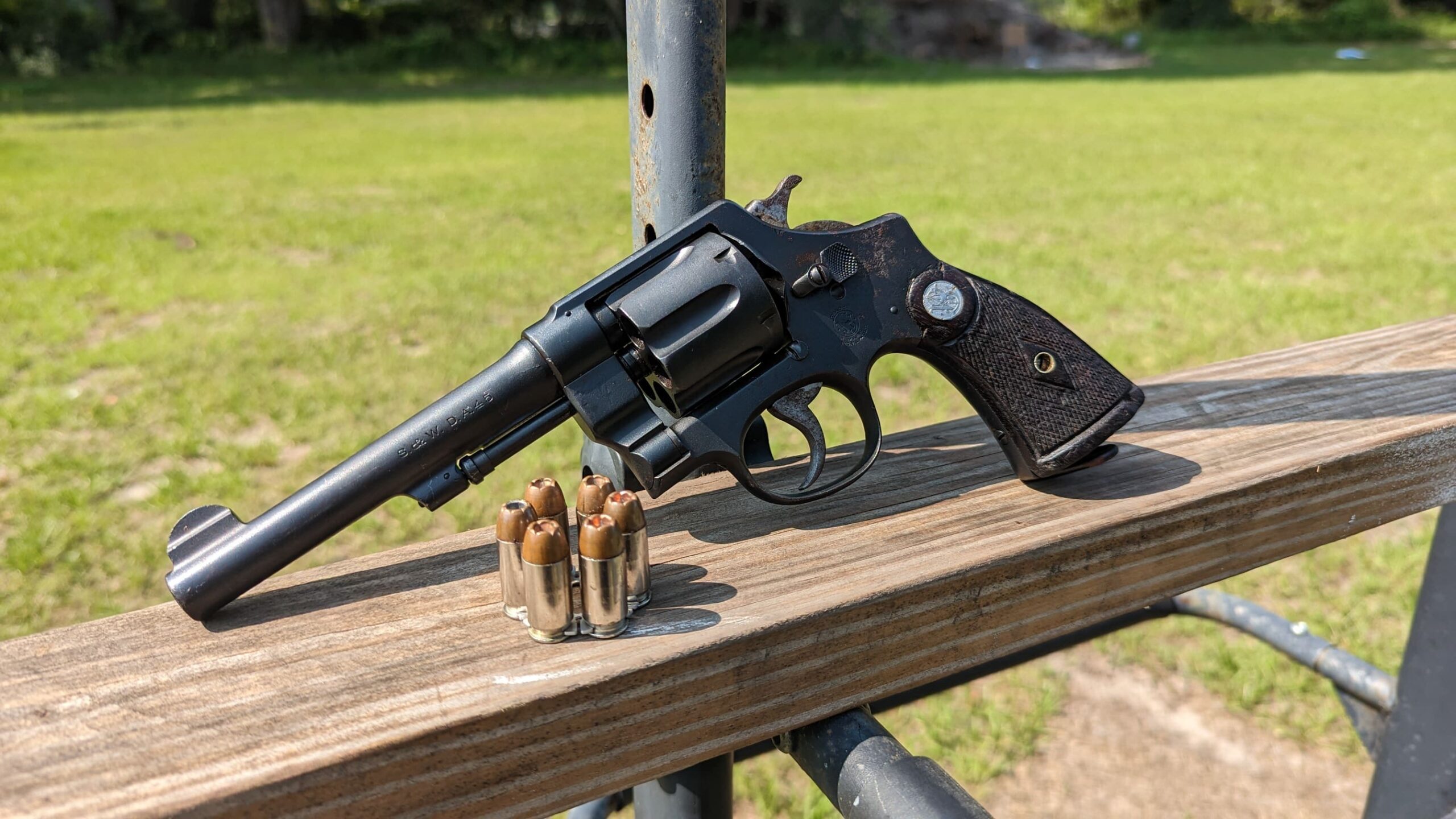
The S&W Model M1917 used a shoulder machined into the cylinder so it can be fired without the moon clips, but ejection is a little tricky. Also, a cartridge known as .45 Auto Rim existed, which was essentially a .45 ACP round with a rim for these revolvers.
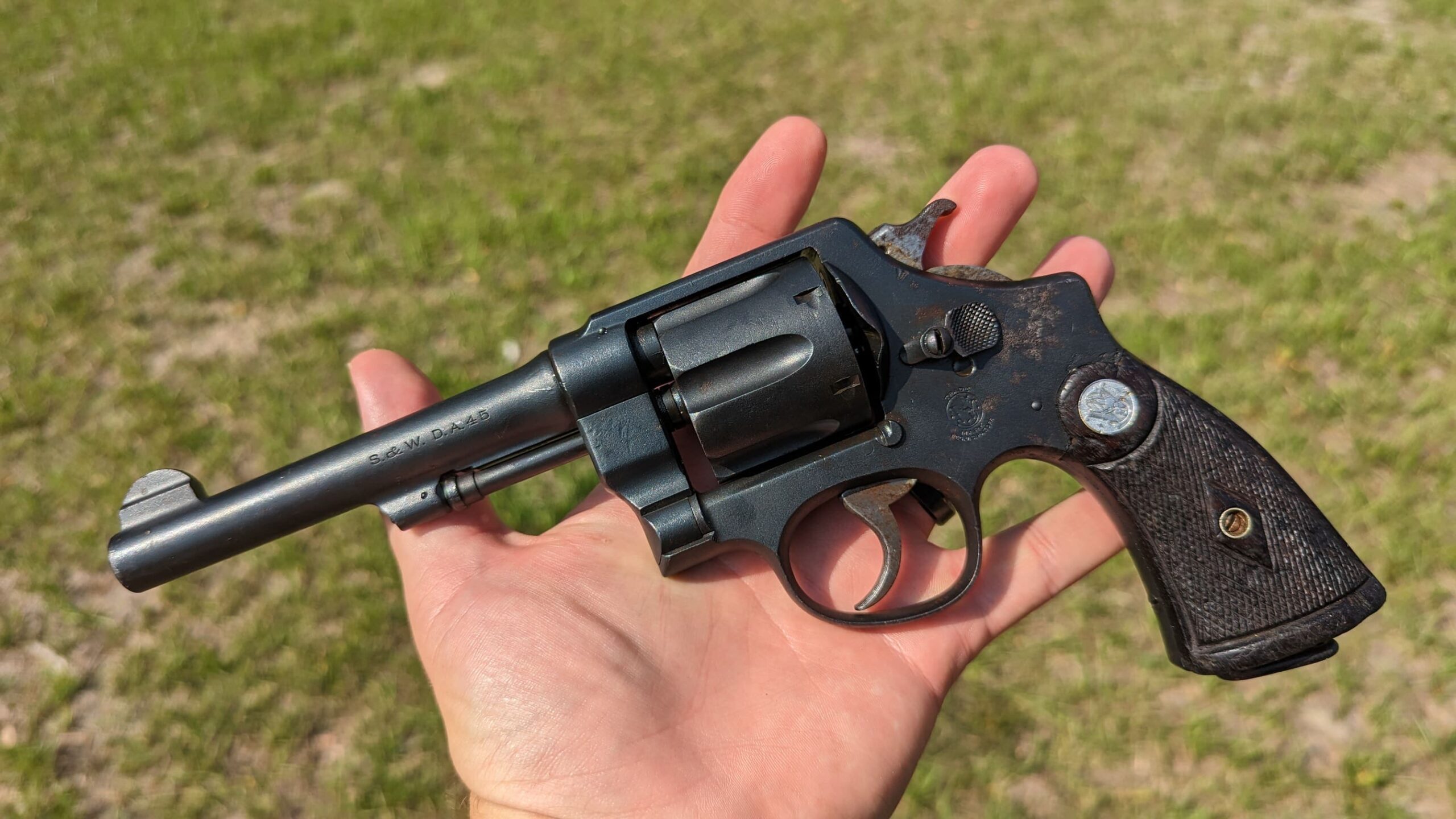
These barrels were 5.5 inches long with an overall length of 10.8 inches. They were big guns, especially compared to the M1911. S&W’s M1917 weighed 2.25 pounds.
My example is the less collectible M1937 Brazillian contract model, but it still scratches my itch for an M1917. Brazil needed revolvers and ordered 25,000 of the M1917s in 1937. These guns have a Brazilian crest stamped on the side of the gun, but they were all produced in the United States. The biggest difference is the crest and the commercial checkered grips.
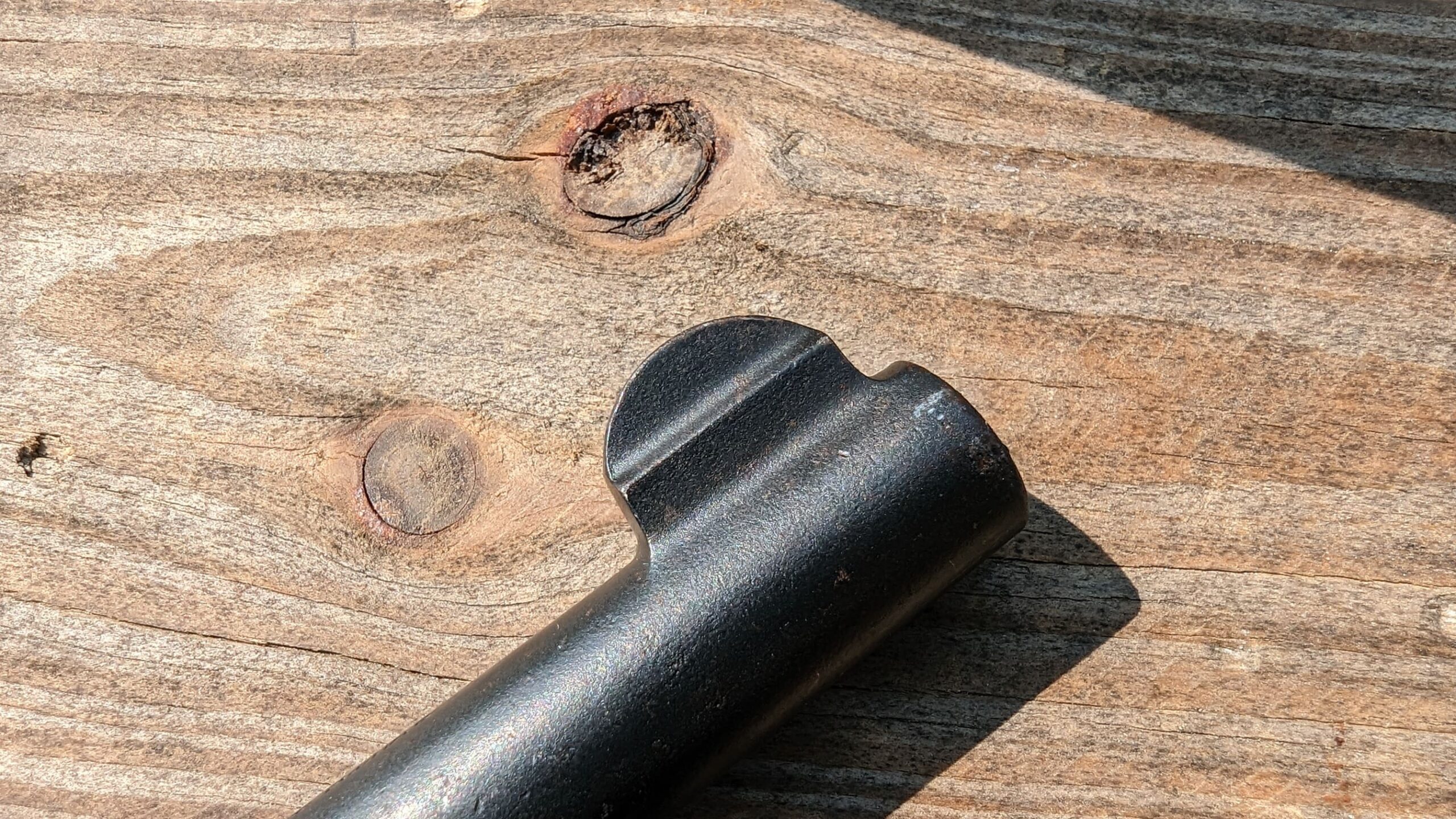
It bears mentioning these guns were quite popular. The Brits and French also used them during the World Wars. Smith produced a commercial version of the gun with a nice blued finish. S&W has since continued to produce numerous .45 ACP revolvers.
At the Range
I’ve shot lots of .45 ACP in my day and I love a good .45, but I rarely shoot them anymore. After plunking down the credit card for some standard 230-grain FMJs in brass cases, I hit the range. I had some new production full moon clips and loaded them up. They dropped in without issue, and I was excited. I love shooting old guns, and this was a gun I had wanted my whole adult life.

I let loose with a few slow-fire double-action rounds. The old honed and clearly refined trigger was quite smooth. It’s heavy, but it glides rearward. I was impressed, and the gun proved decently accurate. I had a man-sized silhouette target and dumped all six rounds in the target’s chest in double action at fifteen yards with ease.
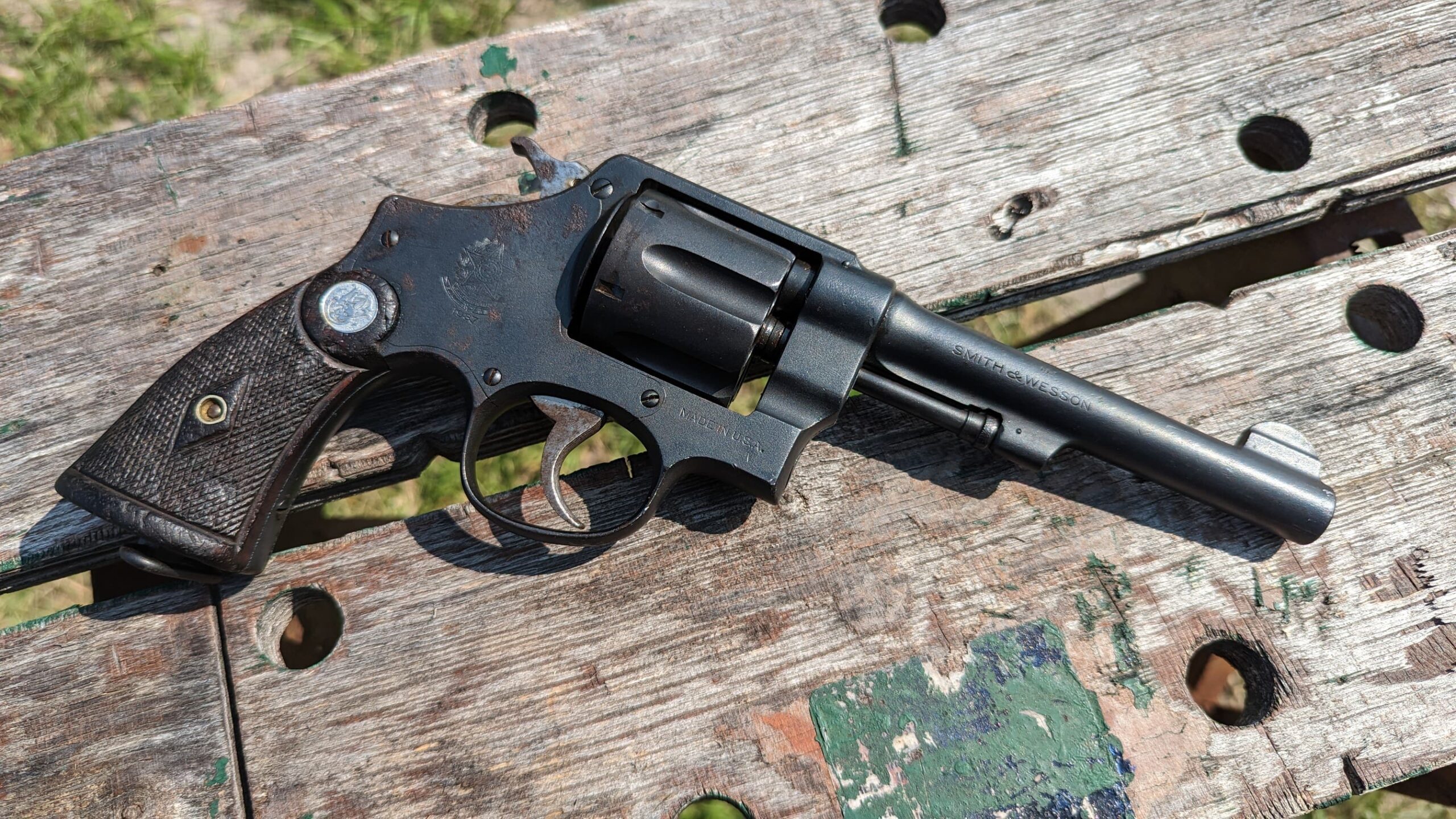
I suck with sights like these, but if I took my time, I could put all six rounds into the black of a B8 at 25 yards using the single-action trigger. The single action pull is a blessing. It’s light, short, and quite nice. You get that surprise break with it.
A Big Boomer
Recoil was a surprise. In my brain, I know what .45 ACP feels like, and this was a bit more intense than that. I realized I know what a .45 ACP feels like through a semi-automatic, not a revolver. Semis eat a little bit of the recoil for you. In a revolver, you get it all. That’s not to say it’s painful or uncontrollable, it just surprised me. The gun bucked a bit, and those slim grips didn’t help.
The gun wants to spin around in your hand a little. It’s easy to see why so many M1917s wore bigger commercial grips. Still, I’d feel comfortable taking on the forces of the Kaiser with the S&W M1917.
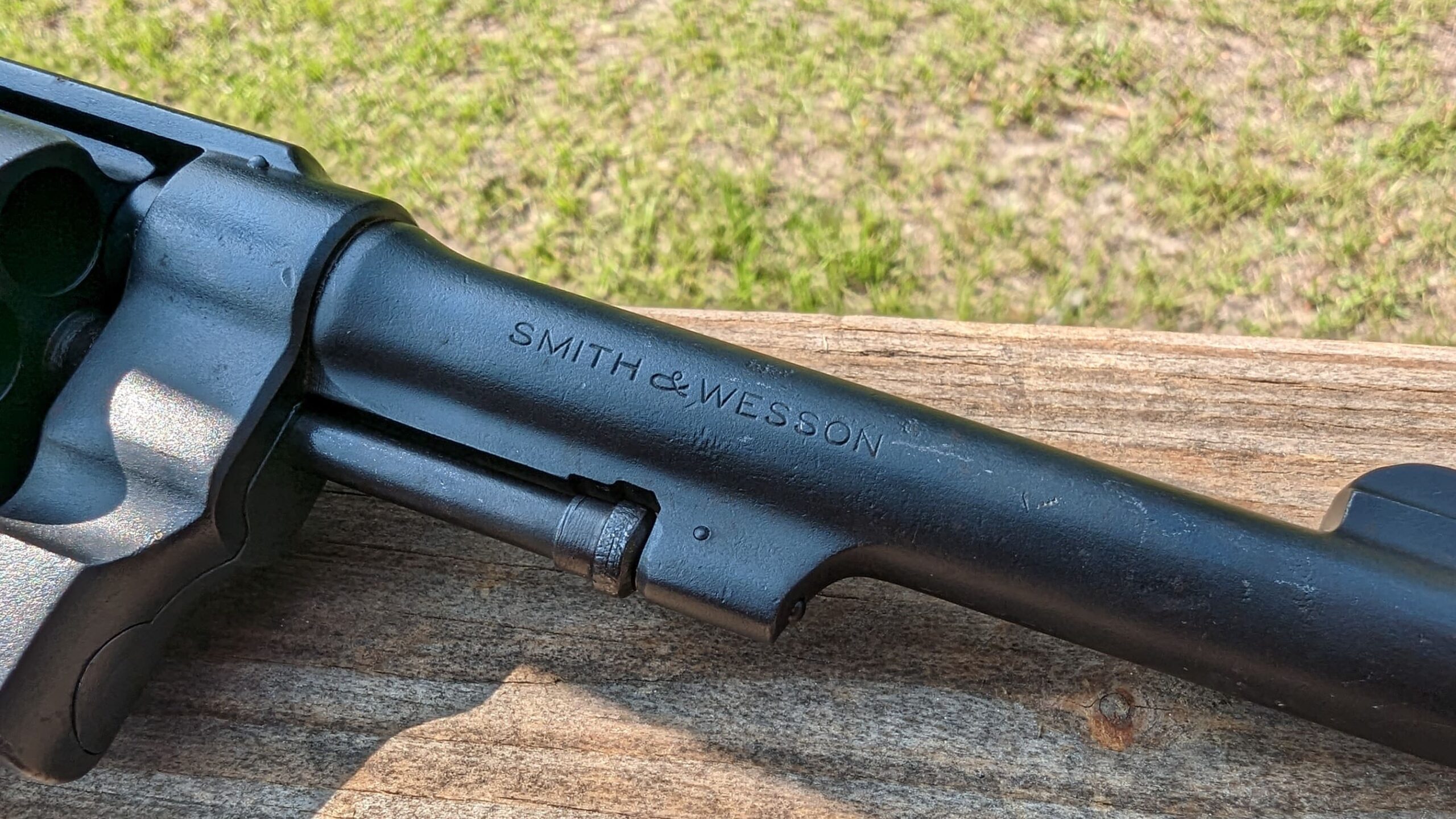
Reloading with the moon clips is a breeze. It’s almost cheating. Eject the empty one, toss in a fresh one, and start shooting. It’s as simple as can be. Not much slower than reloading an automatic.
Unloading those empties from the moon clips is a hassle, though, especially when you’re trying to avoid bending the clips. I see why Auto Rim was a thing and why those moon clip unloaders exist.

Did the M1917 live up to my expectations? Hell yeah, it did. I loved shooting this gun. It’s a living piece of history. Guns are one of the rare things you can own and use from a hundred years ago. You can experience nearly the same thing soldiers did a century ago. That’s why I love old guns and why the Obscure Object of Desire articles will remain favorites of mine.






